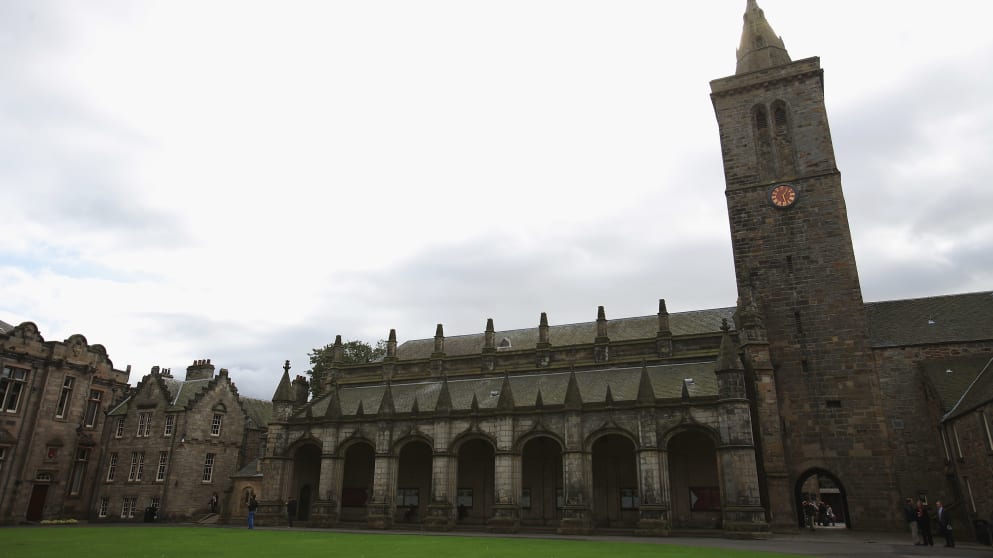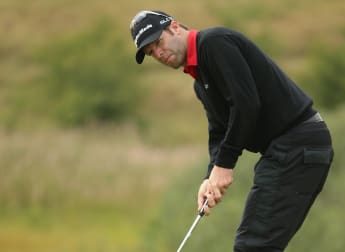As the 2014 SSE Scottish Senior Open continues apace, europeantour.com’s Will Pearsontakes a potted look at the rich and storied history of host town St Andrews, its place in golfing folklore and its continuing allure for all those entwined in the Royal and Ancient game…

To some, it is a place of education; to others, a place of religious and historical significance or film trivia; but to all, the town of St Andrews, Scotland, is indubitably a golfing mecca.
St Andrews is widely regarded as the Home of Golf, partly because it houses the R&A, the ruling authority on the game along with the USGA, but that iconic moniker is also born out of the world-renowned Old Course and its cherished place in the game.
But let us start at the very beginning – a very good place to start…
The town nestles on the east coast of Fife, and began its journey towards the place we know today around the middle of the eighth century, when a monastery was established here by the Pictish King Oengus I – an ecclesiastical organisation concerned with the relics of one Saint Andrew the Apostle.
And when a large cathedral was built here in 1160, St Andrews became one of the most important centres of pilgrimage in Europe.
The University of St Andrews, for which the town is also world-famous, was founded around 1410 making it the third oldest university in the English speaking world after Oxford and Cambridge.
Like many places, however, the town suffered at the hands of the Scottish Reformation and fell into decline – a slump which was ended, in part, by the burgeoning game of golf.

By 1552, there were references in documents to the “playing at golf” on links adjacent to the “water of Eden” but the game is known to have been played here as early as the 1400s.
The most famous, of all, of course, is the Old Course, which was purchased by the town council in 1894, a golfing layout intrinsically linked into the very fabric of the oldest and grandest of all golf tournaments – The Open Championship.
This year’s American Ryder Cup Captain Tom Watson, looking ahead to what will be his final Major Championship appearance at next year’s Open at St Andrews, recently described the place as “the Sistine Chapel of Golf” – a comparison worthy of its historical significance within the game.
With its unique double greens, the iconic, 700 year old Swilcan Bridge and the copious potted bunkers – including the feared Hell and Road Hole Bunker – the Old Course is saturated with character and with history.

The Open has been held on the Old Course at St Andrews a record 28 times and has as star-studded a list of former winners as you could wish for.
Jack Nicklaus, who won two of his 18 Majors here in 1970 and 1978, once said: “If a golfer is going to be remembered, he must win at St Andrews.”
The American chose to end his career on the famous, old links during The Open in 2005, finishing, fittingly, with a birdie at the par four 18th.
He said: “I'm very sentimental and the place gets to me every time I go there. St Andrews was always where I wanted to finish my Major career.”
But St Andrews is not just about the Old Course, the town itself breathes golf.
Legendary Scottish golf journalist Jock MacVicar has covered every Open held in St Andrews since watching ‘Champagne’ Tony Lema triumph here in 1964, so is well-placed to comment on the town’s distinctive ambiance.
“St Andrews means everything to all golfers, including the very best,” said the respected Scottish Daily Express golf correspondent. “There’s nothing like standing on the first tee of the Old Course, or walking up the 18th fairway, and right into the middle of the town virtually.
“It’s the widest fairway probably of any in a championship course but it holds this great interest for everybody and that is based around its history.
“It is a golfing town through and through. You go into any shop or any bar and they would know who is leading a tournament. St Andrews is golf.”
And with the advent of a number of other superb golfing facilities in the areas surrounding the town, such as this week’s modern links style championship course at Fairmont St Andrews, designed by former Ryder Cup captain Sam Torrance, the future of the game in the old burgh remains brighter than ever.

“We just had to come here, as golfers, as golf fans,” said American tourist Tom, staying at Fairmont this week with his family. “St Andrews has everything you could wish for as a fan of the game, the history of the sport is right here. It’s a special place.”
St Andrews has featured in other walks of life, in both sport and culture, too.
The ‘West Sands’, a two-mile stretch of beach which runs adjacent to the Old Course, served as the set for the opening scene of the Oscar-winning Chariots of Fire in 1981 and a small plaque commemorating its role can still be found there today.
But is golf, always golf, for which St Andrews is, and will remain, best known.
It has an aura; special, unique, soul-tingling and perhaps best and most eloquently illustrated by the words of another golfing legend.
Augusta National founder and golfing legend Bobby Jones, who won The Open Championship at St Andrews in 1927 as an amateur, became only the second American after Benjamin Franklin to be handed the key to the city in 1958 and retained a life-long love of the town.
"If I had to select one course upon which to play the match of my life,” he once commented, “I should have selected the Old Course.
"I could take out of my life everything but my experiences here in St Andrews and I would still have had a rich and full life."
To St Andrews, to golf.
Amen.










